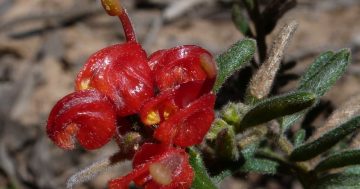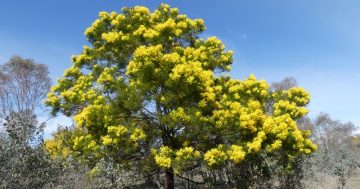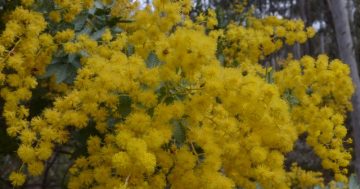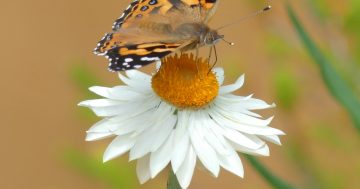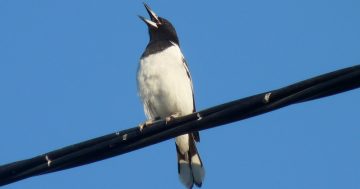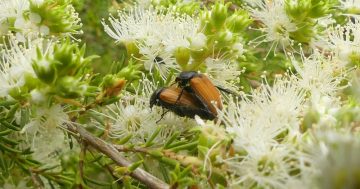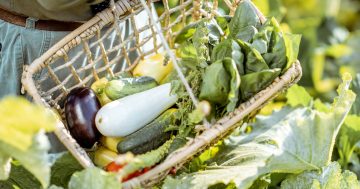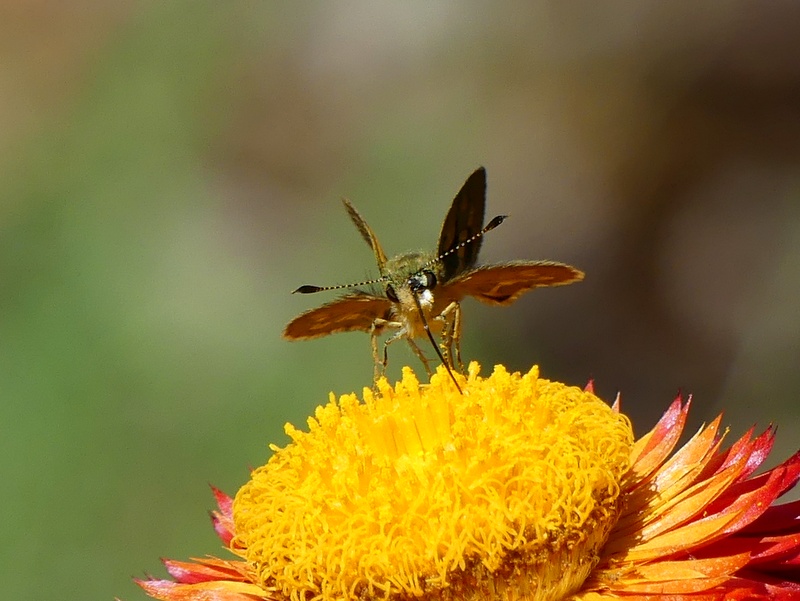
A greenish Grass-dart on a paper daisy in our Duffy garden. Photo: Ian Fraser.
I’ve been thinking of what to write for my first Region column of 2025 and, obviously, the thought of New Year’s resolutions flitted across my mind.
A possible resolution that I might be able to offer some help with is to make a garden more hospitable to native wildlife, especially as more extreme weather events become a new normal.
Now, I’m not suggesting that’s something that everyone would or should be interested in doing but I know that some people are, so here are some ideas, most of which don’t involve much time or expense.
One of the simplest and most important things we can do is keep a permanent supply of water available all year round.
I know that it might not seem necessary in winter but, in fact, birds must tend to their feathers every day of the year, and bathing is an important part of this. That was brought home to me a few years ago when I watched from our balcony on a frosty June morning while a female fairywren dived completely underwater in the bird bath while there was still ice on the surface.
If you have, or might have, lizards in the garden, it’s worth putting a shallow water container on or in the ground, though they can manage on dew and droplets from the hose.
Otherwise, it’s best to have bird baths above the ground, especially if there are cats about. If they’re close to shrubbery, the birds will feel safer too. Water should ideally be refreshed daily but if big birds are using it – magpies, currawongs, wattlebirds, bowerbirds etc – you might need to refill it more often.
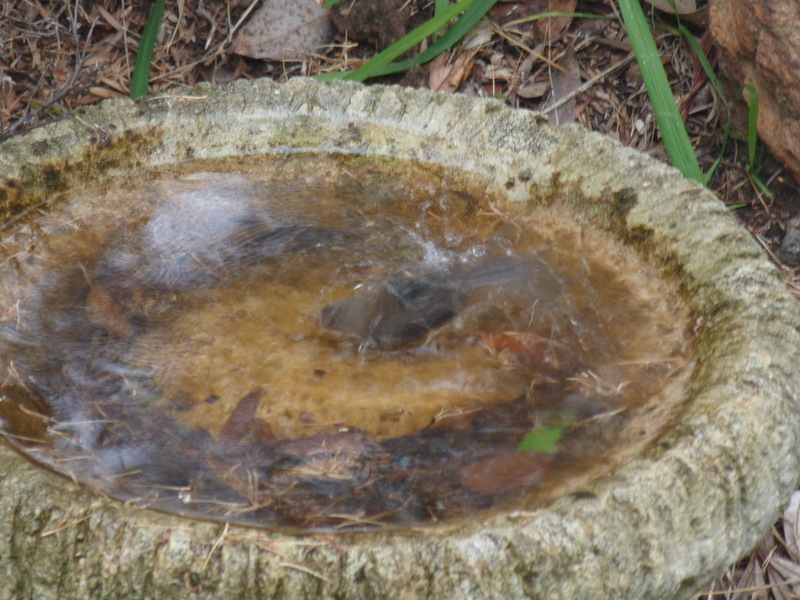
A Superb Fairy-wren fully submerged while bathing in our Duffy garden with ice still on the surface. Photo: Ian Fraser.
The second important ingredient is appropriate plantings.
The best bet here is local species where possible, as those are the ones that the birds and insects have adapted to.
Of course, some birds will use some exotic plants if that’s all that’s on offer, but the more local species you grow, the more diverse will be the wildlife in your garden.
We’ve so far seen 63 species of birds in and from our little Weston Creek duplex front-and-back garden; if you live nearer to one of our wonderful suburban nature parks, that’s a plus too.
Another advantage of local plant species is that they require less water and maintenance than lawn or flower beds. If you decide to grow plants from elsewhere in Australia (and we’ve certainly got some of those), check what they need. Canberra soils are mostly hard acidic clays, so plants from the Western Australian limey sandplains or the Blue Mountains sandstone probably won’t thrive, though big pots can be a good option. In any case, make sure your plants were grown locally – if they grew as seedlings or cuttings in a coastal nursery, they probably won’t survive the first frost.
One of the Pialligo nurseries specialises almost entirely in local native plants and their staff are an excellent source of information and advice. You’ll find them, their name’s a giveaway!
It’s tempting to grow big spectacularly-flowering hybrid grevilleas, but they’ll immediately attract big bullies like wattlebirds, friarbirds and Noisy Miners, which will then chase everything else away. Ironically the native Noisy Miners are one of the worst pests with regard to other native birds, as they live in big aggressive colonies and like suburban open spaces. Dense shrub plantings are not to their liking, so you can discourage them with that.
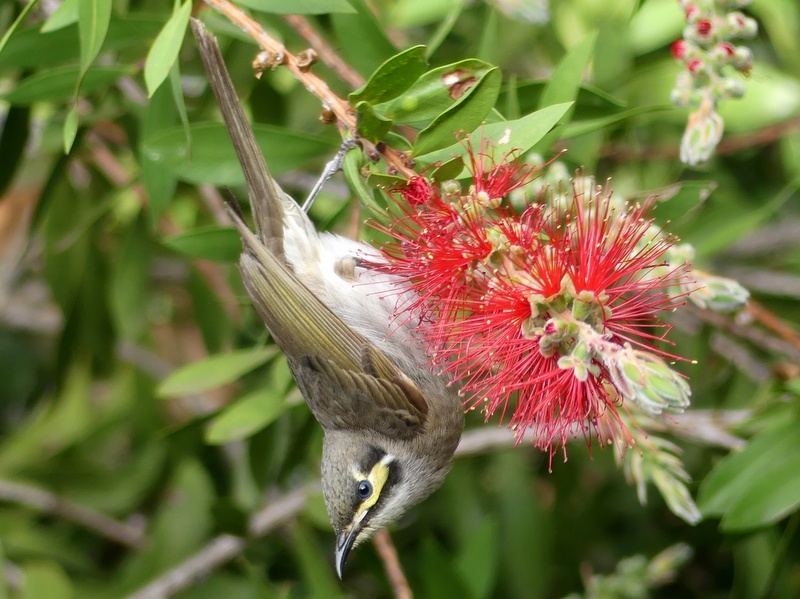
A Yellow-faced Honeyeater on a bottlebrush flower in our Duffy garden. Photo: Ian Fraser.
Consider your lawn. Do you really want all of it?
If you have smaller children then you probably will but, if not and you remove at least some of it and plant shrubs, you’ll save water, discourage miners and increase the animal life of your yard.
Prickly shrubs provide safe nest-sites for small birds. Try planning your garden so that there is something flowering nearly all year round – correas in particular flower in winter when not much else is.
If you provide extra food for birds, please keep it to food that they would eat naturally, like seeds (not oily sunflower seeds) and lean preservative-free meat. Don’t feed every day or at the same time, or they can become dependent. And remember that we do it more for our benefit than the birds’!
f you’re interested in local wildlife, a bit of planning in the garden can attract a lot of it, even in a small space, and will improve the quality of your life. Happy New Year!
